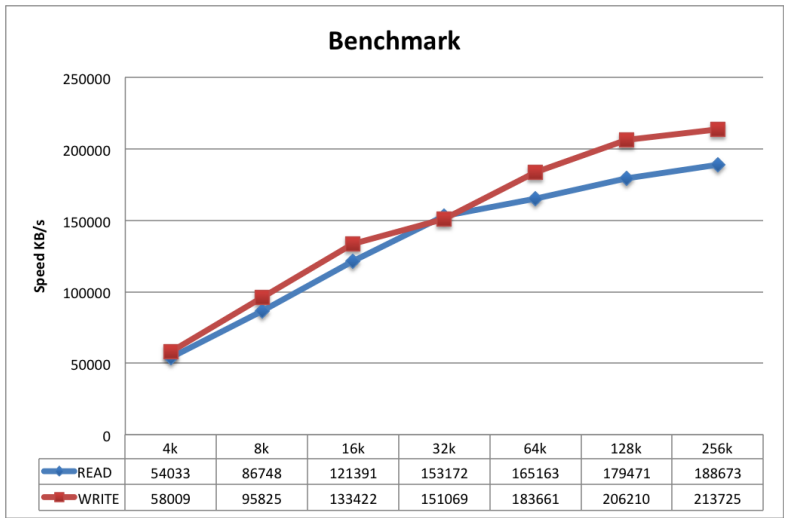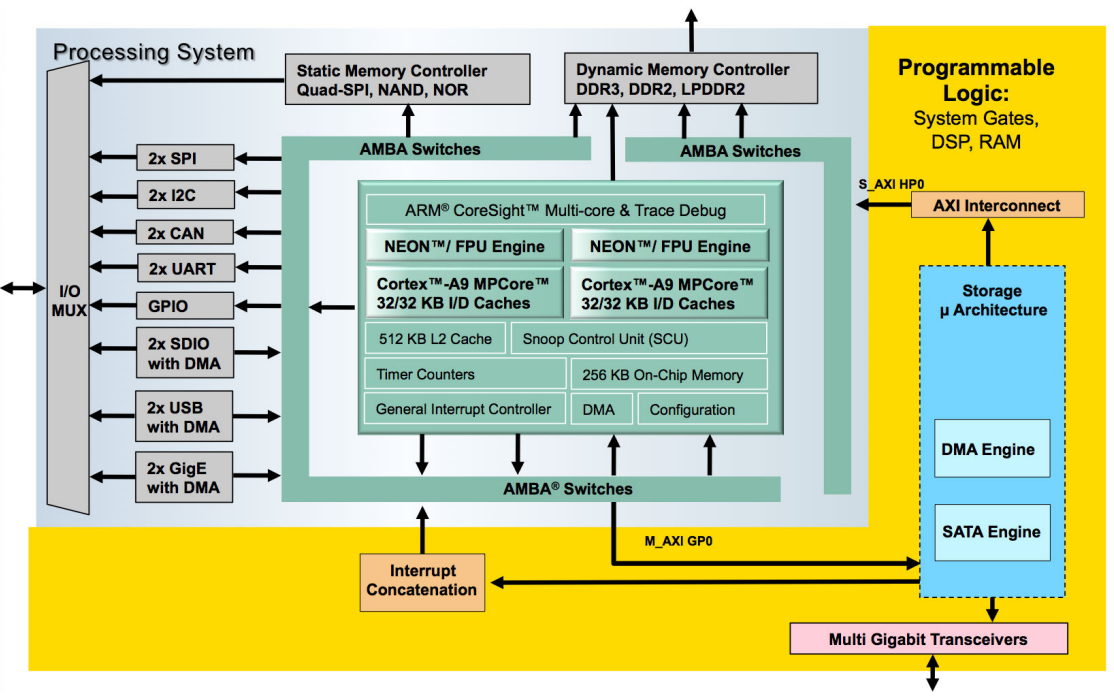ZYNQ SSE – Benchmark for the Avnet Mini-ITX
This Technical Brief shows the Benchmark results you will see after correctly setting up the system as shown in the techtip: Zynq SATA Storage Extension.
Copyright © 2025 Missing Link Electronics. All rights reserved. Missing Link Electronics, the stylized Missing Link Electronics MLE logo are the service mark and/or trademark of Missing Link Electronics, Inc. All other product or service names and trademarks are the property of their respective owners.
Block Diagram
The block diagram shown below gives an overview over the Zynq SSE reference design: Within the Zynq Programmable Logic (PL) the MLE storage micro-architecture instantiates the DMA and the SATA Host Controller IP blocks. The storage micro-architecture itself interfaces with the Zynq Processing System (PS) via the high-performance AXI HP0 slave port. The ARM A9 in the PS runs Xilinx PetaLinux and the SATA Linux kernel driver.
Implementation
| Implementation Details | |
|---|---|
| Design Type | PS + PL |
| SW Type | Linux (Petalinux) |
| CPUs | 2 CPUs 700 MHz |
| PS Features | DDR, USB, UART, ETHERNET |
| PL Cores | ASICS.WS SATA IP |
| Boards/Tools | Avnet Mini ITX Z100 |
| Xilinx Tools Version | Vivado 2014.1, PETALINUX 2013-2 |
| Other Details | Samsung 840 SSD(including Cable and Power Supply), SD-Card |
| Address Map | |||
|---|---|---|---|
| Base Address | Size | Interface | |
| SATA IP | 0x41000000 | 4K | S AXI |
| DMA IP | 0x41010000 | 4K | S AXI, M AXI |
| Files Provided | |
|---|---|
| BOOT.bin | Compilation of Bitstream, FSBL and U-Boot |
| Image.ub | Linux Ramdisk Image |
Step by Step Instructions
In front of Benchmarking the System, the Tech Tip “Zynq- Sata Storage Tech Tip” should be executed to have a working system. For Benchmarking the System, a tool called FIO is used. FIO is a tool that will spawn a number of threads or processes doing a particular type of I/O action as specified by the user. The typical use of FIO is to write a job file matching the I/O load one wants to simulate. We will now execute FIO with different Block sizes to see the impact on the Read and Write speeds of the system. Apply the following commands to the running SATA system, varying the Block size by using different values from 4k to 16M.
Read:
fio –ioengine=sync –direct=1 –rw=read –runtime=10 –filename=/dev/sda –size=1g –name=job1 –numjobs=4 –bs=4k
Write:
fio –ioengine=sync –direct=1 –rw=write –runtime=10 –filename=/dev/sda –size=1g –name=job1 –numjobs=4 –bs=4k
Expected Results
The user should see a Performance (given the right SSD) as shown in the Graph below:

Team MLE has spent significant efforts to try and test all aspects of Zynq SSE. If you feel that you encounter something not right, or if you do have any questions, please do not hesitate to contact us.
🌐 www.missinglinkelectronics.com
MLE (Missing Link Electronics) is offering technologies and solutions for Domain-Specific Architectures, which focus on heterogeneous computing using FPGAs. MLE is headquartered in Silicon Valley with offices in Neu-Ulm and Berlin, Germany.

